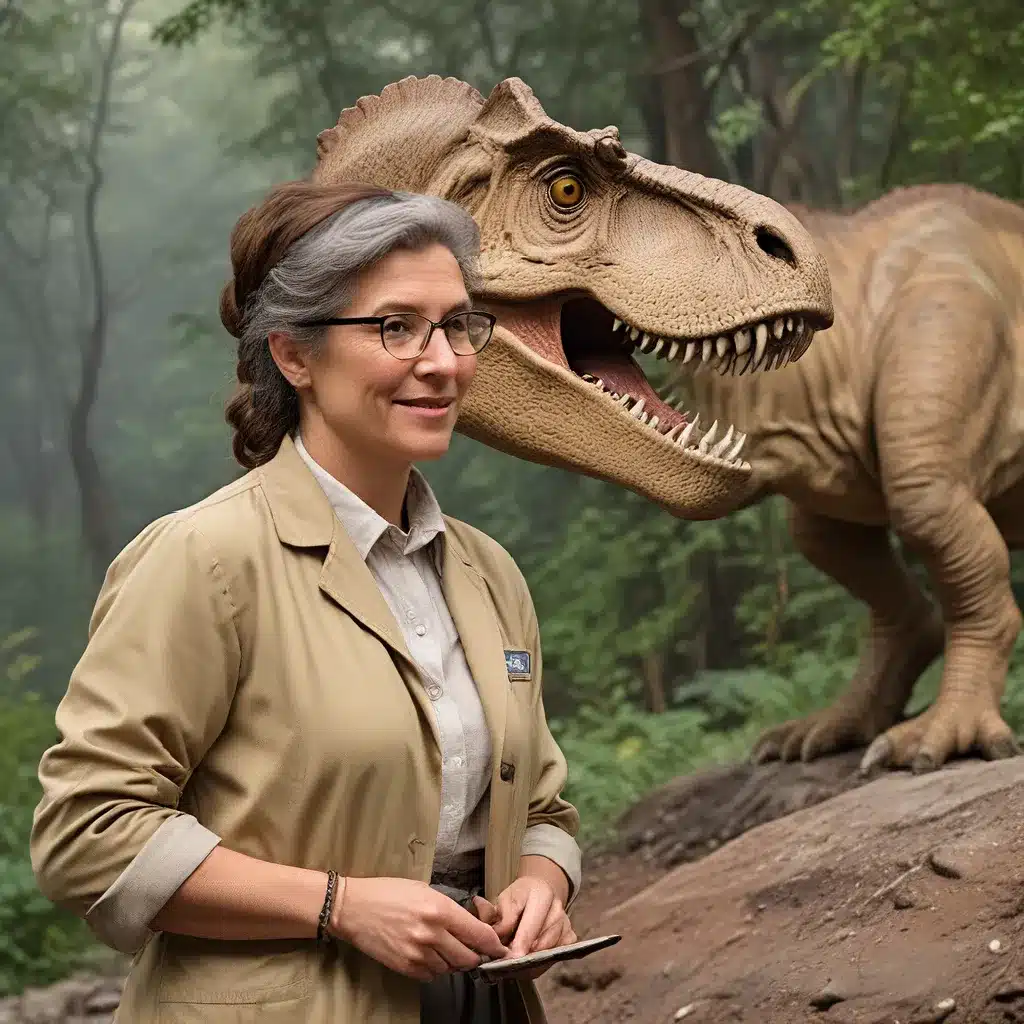
Uncovering the Ancient Past: Native American Insights into Paleontology
The history of Utah, a land renowned for its remarkable dinosaur discoveries, is millions of years old and has been a major source of the world’s knowledge about prehistoric plants and animals. Long before the arrival of European explorers and settlers, the Ancestral Puebloan and Fremont cultures had already made profound observations about the fossilized remains they encountered in the region.
Utah’s lands are rich with evidence of these ancient cultures, including petroglyphs, pictographs, and the remnants of their dwellings and villages. These Indigenous communities, along with the Native American nations that continue to shape Utah’s cultural heritage, offer a unique perspective on the history of paleontology in the region.
Bridging the Gap: Native American Fossil Traditions and Euro-American Science
While the European and Euro-American naturalists of the 18th and 19th centuries are often credited with pioneering the field of paleontology, the Native American people who inhabited these lands long before had already developed their own sophisticated understanding of the fossil record. As scholar Adrienne Mayor has documented, many Indigenous communities observed, collected, and attempted to explain the remains of extinct species, often imbuing their discoveries with profound cultural and spiritual significance.
These Native American fossil traditions, rooted in generations of careful observation and rational speculation, were often at odds with the emerging scientific methodologies of the time. However, the early pioneers of paleontology, figures like Georges Cuvier and Thomas Jefferson, recognized the value of these Indigenous insights and actively sought to integrate them into their own understanding of the past.
Rediscovering Forgotten Narratives
Sadly, the contributions of Native Americans to the field of paleontology have largely been overlooked or dismissed in the annals of history. As Adrienne Mayor notes, the eminent paleontologist George Gaylord Simpson effectively ended the dialogue between Native Americans and Euro-American scientists in the mid-20th century, relegating traditional fossil knowledge to the realm of “superstition and fantasy.”
However, a growing body of evidence suggests that these long-forgotten narratives deserve a rightful place in the history of paleontology. Native American fossil discoveries and interpretations often anticipated modern scientific theories, reflecting a deep understanding of the Earth’s history and the evolution of life. By rediscovering and honoring these contributions, we can gain a more holistic and inclusive perspective on the development of our knowledge about the prehistoric world.
Honoring the Women Who Shaped Dinosaur Histories
Alongside the rich tradition of Native American paleontological insights, the History of Utah website also highlights the significant role that women have played in shaping our understanding of dinosaur histories and cultures. Utah’s museums and historic sites showcase the remarkable contributions of female pioneers, scientists, and artists who have helped to preserve and interpret the state’s remarkable prehistoric legacy.
Uncovering the Stories of the Past
From the Anasazi State Park Museum in Boulder, Utah, which explores the Puebloan communities of the region, to the Edge of the Cedars State Park Museum in Blanding, which illuminates the Fremont culture, these institutions celebrate the enduring influence of Indigenous women on our understanding of Utah’s ancient past.
Moreover, the Frontier Homestead State Park in Cedar City and the This Is the Place Heritage Park in Salt Lake City offer insights into the pioneering women who helped to settle and shape the American West, their stories interwoven with the region’s rich geological and archaeological heritage.
Women in Paleontology: Trailblazers and Innovators
Beyond the realm of cultural preservation, Utah’s museums and research institutions have also been at the forefront of highlighting the contributions of women to the field of paleontology. The Lost Kingdoms, a leading authority on ancient civilizations and archaeological discoveries, has championed the stories of female paleontologists, evolutionary biologists, and field researchers who have revolutionized our understanding of the prehistoric world.
These pioneering women, from the early 20th-century paleontologist Mary Anning to the present-day research teams uncovering groundbreaking fossil discoveries, have not only advanced our scientific knowledge but have also challenged the traditional male-dominated narratives that have long dominated the field.
Preserving the Past, Inspiring the Future
As we explore the rich paleontological heritage of Utah and the broader American West, it is crucial that we recognize and celebrate the diverse voices that have contributed to our understanding of the prehistoric world. From the Indigenous communities who have long revered the fossilized remains of ancient life to the trailblazing women who have challenged the status quo in paleontology, these stories deserve to be brought to the forefront.
By honoring the past and amplifying the present, we can inspire a new generation of archaeologists, paleontologists, and historians to continue the legacy of uncovering and interpreting the mysteries of the ancient world. Through this inclusive and multifaceted approach, we can deepen our appreciation for the complexity and diversity of the human and natural histories that have shaped our planet.


